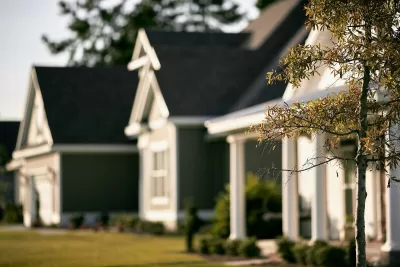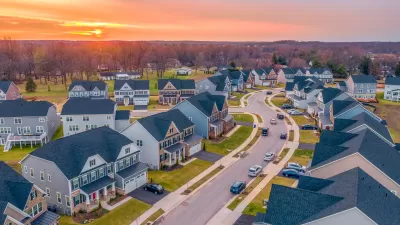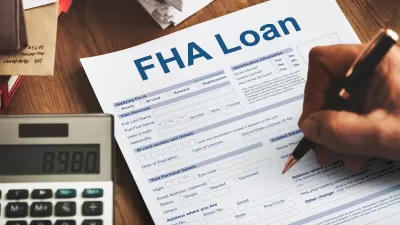Owning a home has long been considered the ultimate aspiration. But social and economic realities mean the stories about and the path to homeownership are not simple and straightforward.

In a feature piece, Katy Kelleher looks at the concept of homeownership as part of the American dream and the disconnects between aspirations and reality. She starts by describing various films where the perfect home ends up terrorizing its occupants, a reflection of our tenuous relationship with the idea of homeownership and the burdens it brings:
There are two different tales we tell ourselves about houses. The primary story is not about ghosts or demons or red rooms or ghouls, but rather about bright futures, long lives, children, grandchildren, and hard-earned success. The second story, the darker story, is about the horror of being trapped.
Homeownership was not always an integral part of American culture, she notes. Instead, the narrative shifted in the post-World War II era, when opposition to public housing was on the rise and the suburbs were expanding rapidly. "Suburbia has always been good for industry. Big houses required big appliances and used lots of carbon, creating a ‘hydrocarbon middle-class family’ that was buoyed by three industries: coal, steel, and automaking," says Kelleher.
For Americans today, particularly millennials, owning a home is harder and even out of reach for many. And homeownership is not fulfilling the needs, perceived or actual, that it had in the past. "Perhaps the real American dream is to find a sense of stability, safety, and acceptance. Maybe this is a downsized version of our parents’ American dream, or perhaps it’s just more honest, taking into account all the different stories we’re fed from the outside, and all the private stories we tell ourselves behind closed doors," adds Kelleher.
FULL STORY: THE HOMEOWNERSHIP OBSESSION

Study: Maui’s Plan to Convert Vacation Rentals to Long-Term Housing Could Cause Nearly $1 Billion Economic Loss
The plan would reduce visitor accommodation by 25,% resulting in 1,900 jobs lost.

Alabama: Trump Terminates Settlements for Black Communities Harmed By Raw Sewage
Trump deemed the landmark civil rights agreement “illegal DEI and environmental justice policy.”

North Texas Transit Leaders Tout Benefits of TOD for Growing Region
At a summit focused on transit-oriented development, policymakers discussed how North Texas’ expanded light rail system can serve as a tool for economic growth.

Comment: EPA Cuts will Send Atlanta Back to Eye-burning Ozone, Lung-damaging Smog, and Raw Sewage in the Chattahoochee River
A veteran political journalist takes stock of the hard-earned ground Georgia stands to lose with slashed environmental protection.

How Community Science Connects People, Parks, and Biodiversity
Community science engages people of all backgrounds in documenting local biodiversity, strengthening connections to nature, and contributing to global efforts like the City Nature Challenge to build a more inclusive and resilient future.

Alabama: Trump Terminates Settlements for Black Communities Harmed By Raw Sewage
Trump deemed the landmark civil rights agreement “illegal DEI and environmental justice policy.”
Urban Design for Planners 1: Software Tools
This six-course series explores essential urban design concepts using open source software and equips planners with the tools they need to participate fully in the urban design process.
Planning for Universal Design
Learn the tools for implementing Universal Design in planning regulations.
City of Santa Clarita
Ascent Environmental
Institute for Housing and Urban Development Studies (IHS)
City of Grandview
Harvard GSD Executive Education
Toledo-Lucas County Plan Commissions
Salt Lake City
NYU Wagner Graduate School of Public Service




























